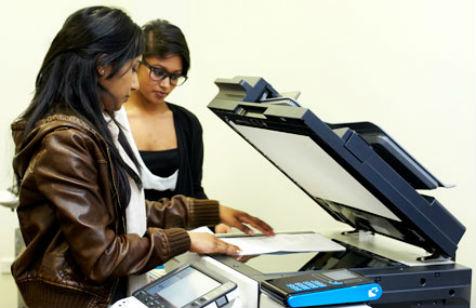The Australian Law Reform Commission (ALRC) says copyright law needs to change. But publishers say replacing the education statutory license in copyright law with a ‘fair use’ test will disadvantage educators.
The ALRC inquiry into copyright is taking submissions until July 31 and so the commissioner heading the inquiry has been out and about spruiking on the recommendations thus far.
The problem is, in recommending the contentious removal of the educational statutory licence system, the ALRC has ignored the licence’s major beneficiaries: teachers and educational content creators.
Australia has a unique, exceptionally efficient and simple copyright licensing system which allows 259,000 teachers at 9,400 schools around the country to copy 1.2 billion pages of content every year without having to seek permission.
The educational systems to which those teachers belong pay a flat annual fee for the use of the copyright. This equates to just under $17 per student per year, an amazingly cheap rate that allows copying of approximately 350 pages, per student, per year! That payment is collected by the government-appointed Copyright Agency and returned to the copyright owners. This system takes the place of schools buying multiple copies of textbooks but is also useful for teachers wanting to cherry pick from a wide range of resources and tailor-make their lessons.
A survey system samples schools’ usage to determine how much and what has been photocopied and shared digitally. The system has been designed to operate with minimal burden on teachers.
The education system may not like having to pay the licence fees, but if there was no copying being done there would be no need for the licence. They argue that copyright regulations stifle innovation. We would say the opposite is true – fees that publishers and other content creators receive for educational products are used to invest in new educational resources, online and in print. A loss in revenue will potentially stifle innovation as the funds available to invest will be reduced.
So, what is the Australian Law Reform Commission proposing? In effect, the dismantling of the system and its replacement with a combination of voluntary licencing and ‘fair use’ exceptions but with no practical explanation of how that will work. This will result in taking away a well-tested and efficient system, that currently allows great flexibility for teachers to create lessons by copying resources for classroom use on any occasion, and replacing it with an environment of uncertainty.
ALRC Commissioner for this inquiry, Jill McKeough, said herself on June 7, 2013[1]: “So, if we introduce reforms, there won’t be a lot of case law, there won’t be a lot of precedent, and it’s the difficulty of adjusting to that new environment that copyright owners fear.”
Who then, will develop the case law and set the new legal precedents? Who will mount the challenges and who will benefit from those legal cases?
The ALRC has claimed that a voluntary system of licensing will be more efficient. But the reality at schools will be far different.
In this new proposed environment, teachers will need to seek permission before copying, and possibly pay a license themselves or from school budgets, or attempt to copy under ‘fair use’, which will mean necessary testing in the courts to develop benchmarks for what is allowable. Imagine 259,000 teachers around Australia having to stop what they have been doing all their working lives, and rethink whether they can use every resource they now have at their fingertips!
So, teachers will likely go ahead and copy without permission and that situation will be repeated time and again. Which means publishers, authors, illustrators and photographers will inevitably miss out on fair payment for the rights they hold in their work. This is an unfair dilution of the value they contribute to the Australian school education system – considered a robust and advanced system globally.
If publishers and authors are not paid for their products, many will be unlikely to provide them in future. The photocopying is not just a small thing; a huge part is a substitute for buying a book. Because schools have the licence system, content creators lose real sales – and the statutory licence gives them some recompense for this.
In this day and age lots of things have become ‘free’ which might be OK in the short-term but often has long-term effects – especially to individual creators who take risks. Less people choosing the creative path, and less quality Australian educational content could be two long-term effects, which is not great for future generations.
Publishers, authors and content creators are all passionate about providing good educational outcomes. But that doesn’t mean they can do it for free.
Submissions to the ALRC’s review close on July 31, 2013 and we urge Australia’s creative community and educators to let the commission know their perspective on this issue.
If copyright law changes, will teachers just copy without permission?




